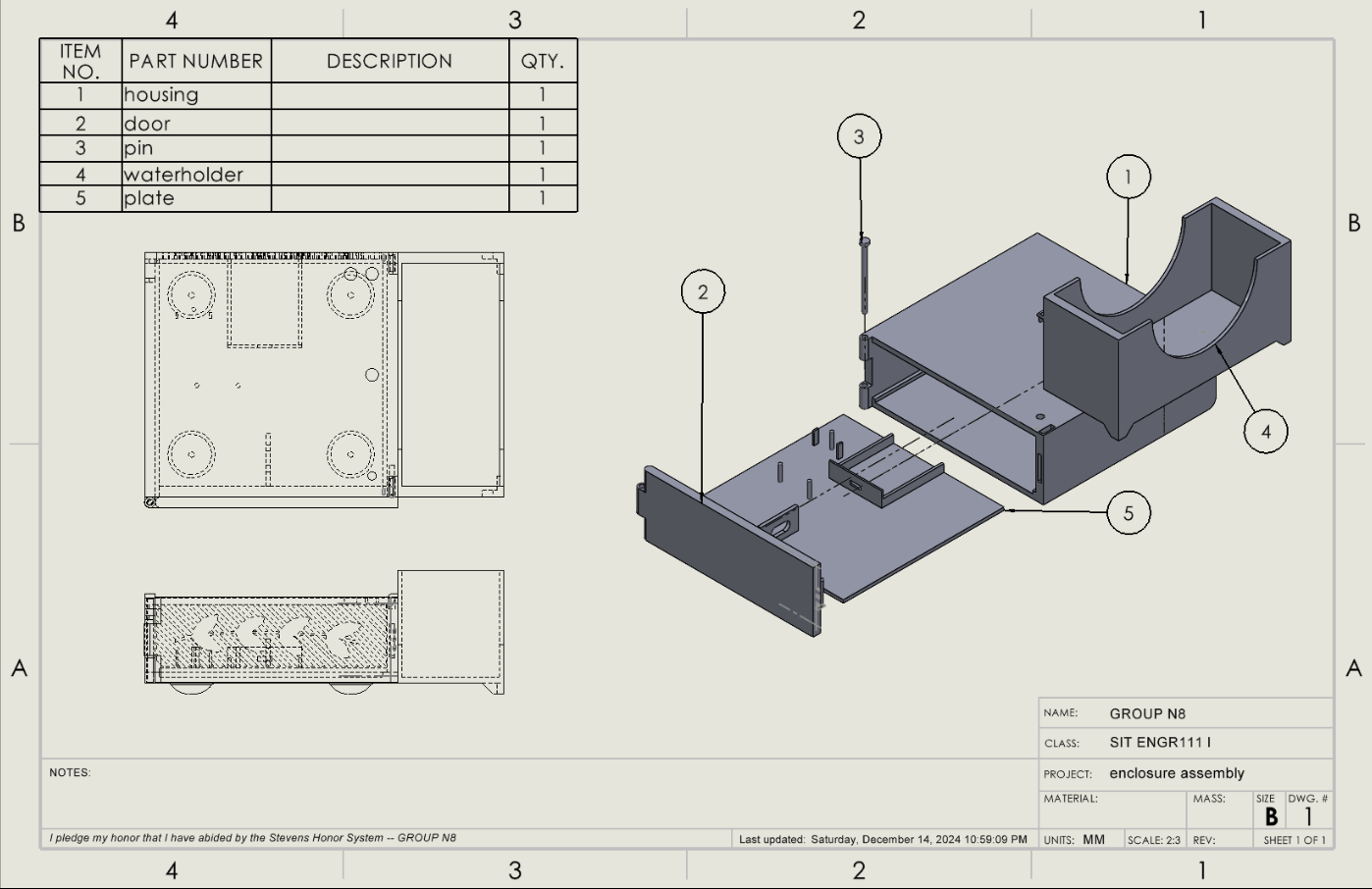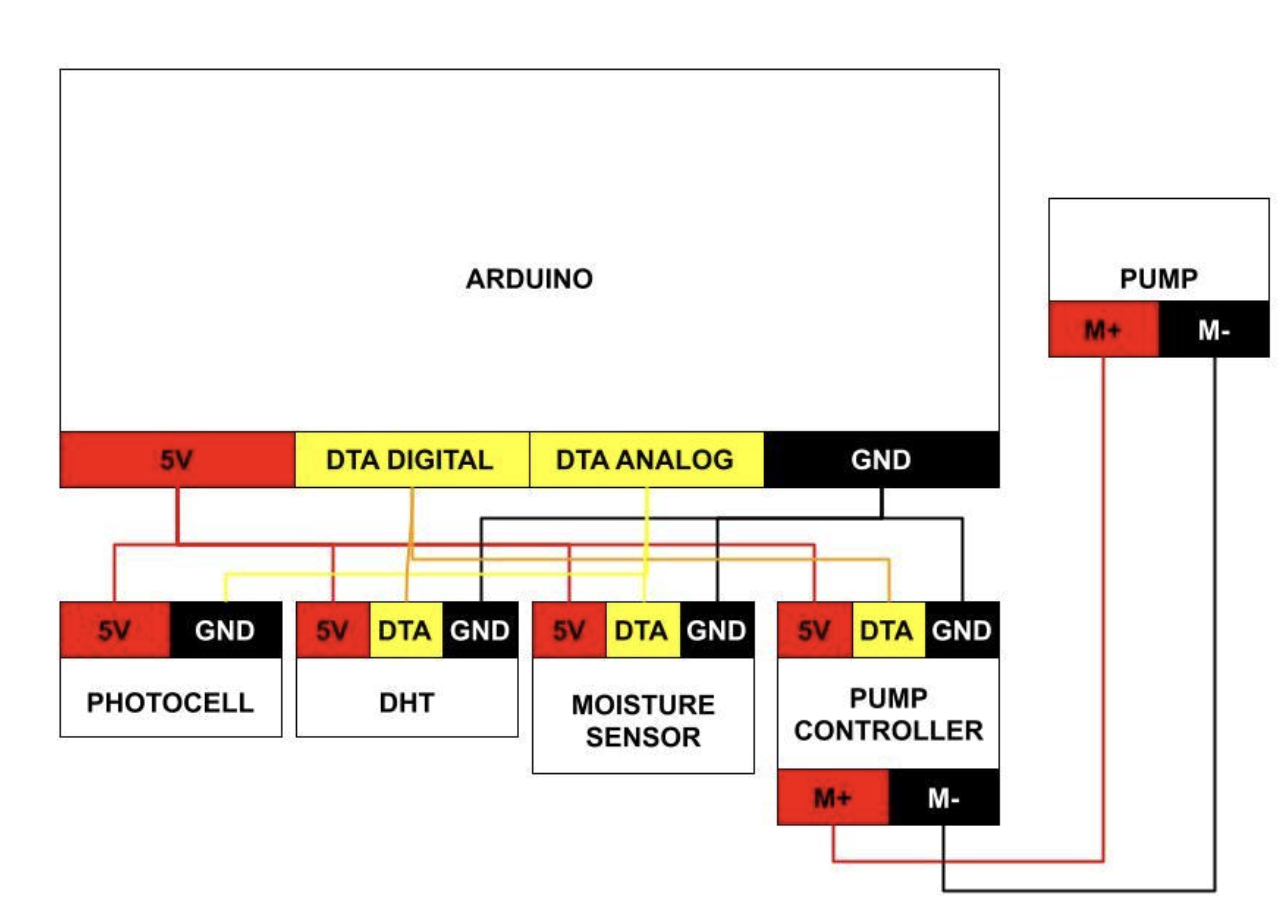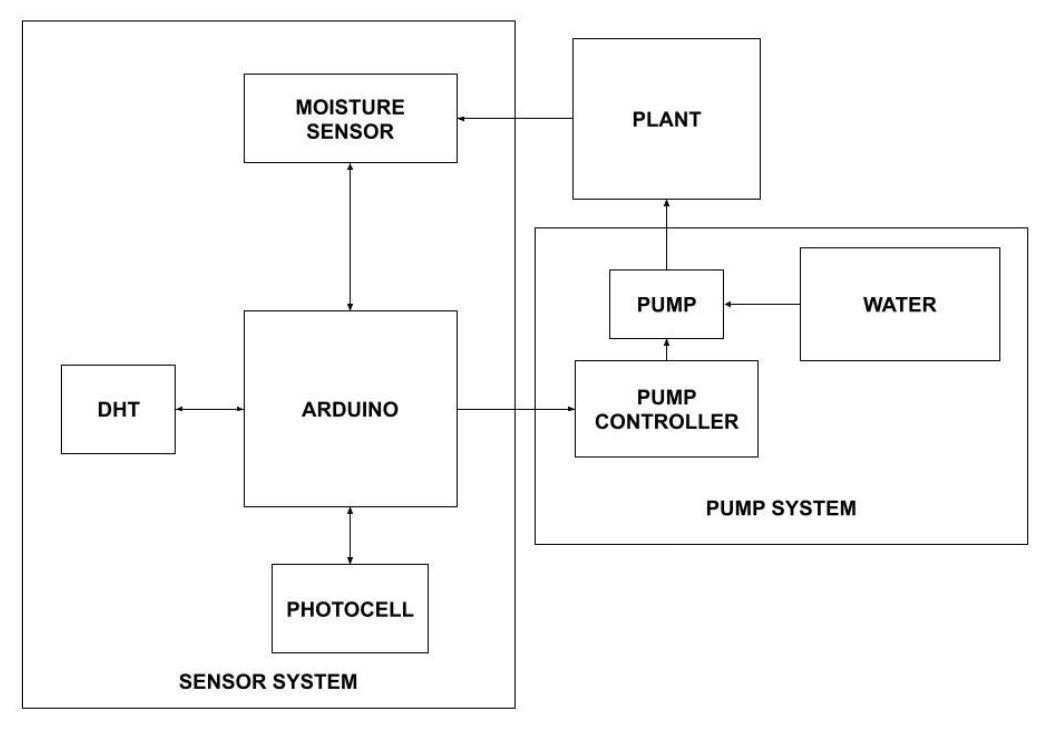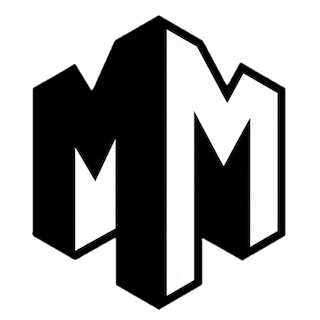IoT Smart Watering System

SolidWorks drawing of complete enclosure
Project Overview
This smart watering system uses IoT technology to automate plant care by monitoring soil moisture levels and environmental conditions. When the soil becomes too dry, the system automatically waters plants while providing real-time data monitoring through a cloud-based dashboard.
The Challenge
Modern lifestyles often make consistent plant care difficult. People forget to water plants, struggle to maintain optimal growing conditions, or can't monitor their plants while away. Our solution addresses these challenges by creating an affordable, reliable automated system accessible from anywhere.
System Architecture
The system integrates hardware and software components to create a complete IoT solution:

Circuit architecture diagram showing all component connections
Hardware Components
- ESP32 Microcontroller: The system brain that processes sensor data and controls the water pump
- Capacitive Soil Moisture Sensors: Provide accurate moisture readings without corrosion issues
- DHT22 Sensor: Monitors ambient temperature and humidity
- Water Pump: Delivers precise amounts of water when needed
- Water Reservoir: Stores water for automated dispensing
Software & Connectivity
- Arduino IDE: Used for programming the ESP32
- Adafruit IO: Cloud platform for data visualization and remote monitoring
- IFTTT: Delivers notifications when watering occurs or when water levels are low
- Wi-Fi Connectivity: Enables remote access and data transmission
How It Works
- Moisture sensors continuously monitor soil conditions
- When moisture levels drop below the preset threshold (30% in testing), the water pump activates
- The DHT22 sensor collects environmental data (temperature and humidity)
- All data is sent to Adafruit IO for visualization and analysis
- Users receive notifications through IFTTT when watering occurs
- The system operates autonomously but allows for manual overrides

System block diagram of the moisture sensor and pump assembly
Development Process
The team followed a systematic approach to development:
- Requirements Analysis: Identified key functionality needed for effective plant care
- Component Selection: Chose reliable, affordable components suitable for the application
- Prototyping: Built and tested basic circuits for each sensor and the pump mechanism
- Software Development: Created firmware for the ESP32 including sensor reading, pump control, and data transmission
- Cloud Integration: Established connections to Adafruit IO and set up data feeds
- Testing and Refinement: Conducted extensive testing under various conditions to ensure reliability
Performance Results
Testing demonstrated excellent system performance:
- Moisture Detection: Accurate readings within ±3% compared to manual measurements
- Watering Precision: Consistent delivery of water when moisture dropped below 30%
- Data Reliability: 98% successful data transmission rate to cloud platform
- Power Efficiency: Low power consumption suitable for potential battery operation
- Notification System: Timely alerts with no false positives during testing period

Graph showing moisture levels and watering events over time from Adafruit IO dashboard
Future Enhancements
The team identified several opportunities for system improvement:
- Solar Power Integration: Adding solar panels to create a fully self-sufficient system
- Water Level Monitoring: Implementing sensors to detect low water in the reservoir
- Multiple Zone Control: Expanding to support different watering schedules for various plants
- Machine Learning: Developing algorithms to optimize watering based on plant species and environmental patterns
- Mobile App: Creating a dedicated application for more granular control and analytics
Conclusion
This IoT Smart Watering System successfully demonstrates how embedded systems and internet connectivity can solve everyday problems. The project combines hardware and software engineering with cloud services to create an effective, practical solution for automated plant care.
